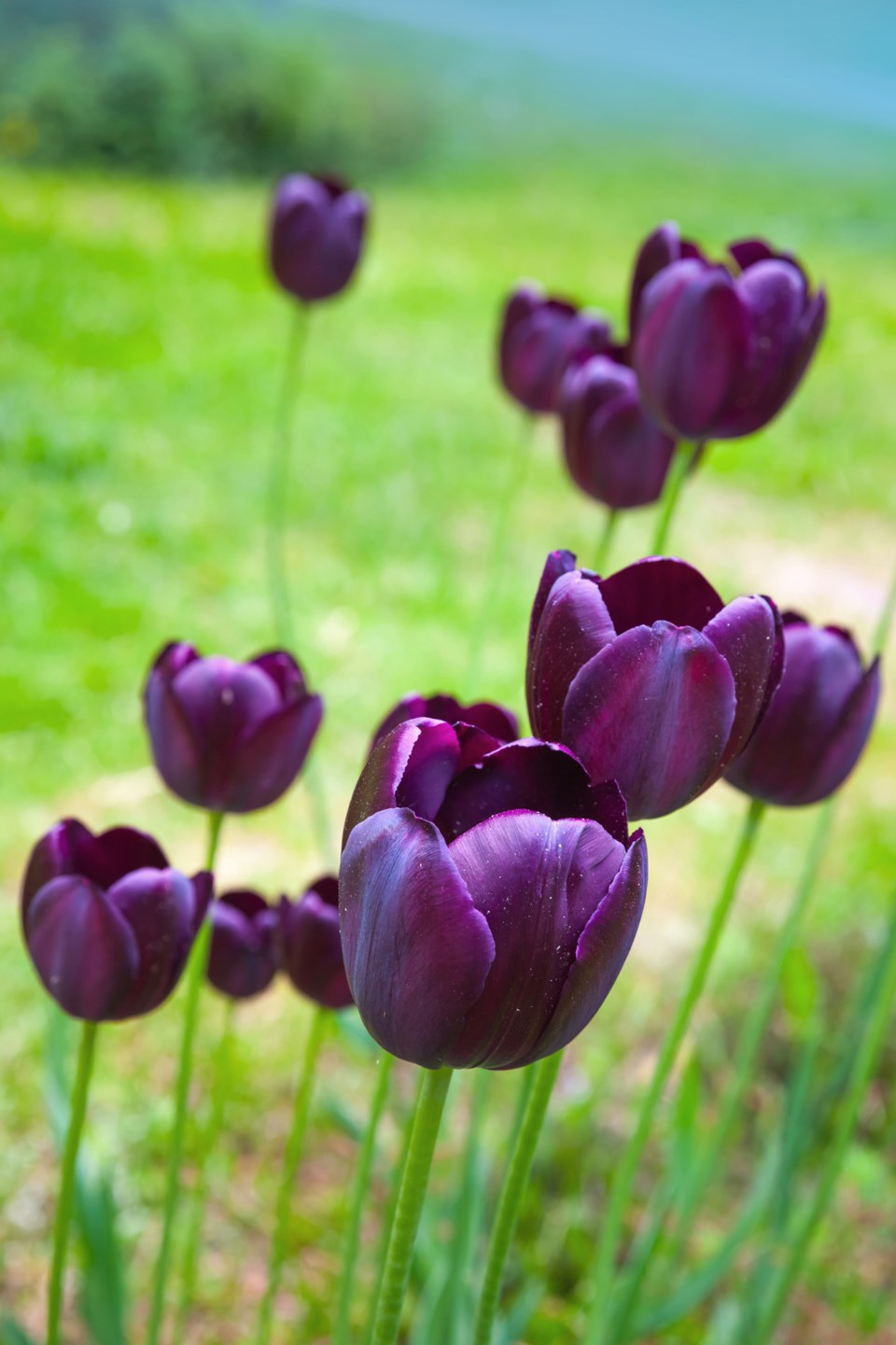When perennial roots are exhausted and drying up in long, hot droughts, tulips are happier than they’ve ever been. They have a huge need for months of bone-dry resting time.
That’s why old-time gardeners used to dig up tulips in late spring, store them inside through summer and replant them late in fall. They knew that rain during summer or watering neighboring plants is a sure way to rot tulips and give them diseases.
For container gardeners living in space-short condos, this can be a problem, as it can also be for people with small in-ground gardens who plant water-hogging annuals above the tulip bulbs below.
The answer for both kinds of gardeners is to have a separate container/garden area for tulips paired with other plants that handle dry summers well. This can include alliums, lavenders, sedums, bearded irises and grasses.
Bonemeal is a nutritious food for all bulbs. A teaspoon or more (depending on bulb size) is even better if it can be covered by a layer of sand under each bulb. This helps retain the good drainage that tulips love.
Some tulips are so beautiful that gardeners would love to keep them going year after year.
For instance, some tulips have amazingly variegated leaves that give beauty long before the flowers open. The oldest variety is Praestans Unicum, which has intensely-red blooms and a creamy line hugging each leaf edge.
China Town is another. This has white and green variegation followed by a pink bloom. New Design is similar. Yellow Wave is colour-coordinated with broad yellow stripes on its green leaves – the golden flower arrives later.
Parrot tulips with their huge fringed and shredded blooms are quite unforgettable: Irene Parrot has flaming orange petals which are also green and yellow-striped. Estella Rynveld has red and white tousled flowers while Super Parrot is a cool white and apple green. Black Parrot is a dark purple.
The heritage black (deep purple) tulip Queen of the Night now has a daughter. Black Hero is a large double and the same intense purple.
Double tulips are quite spectacular, and since they’re among the last to bloom they sometimes miss most of the violent spring storms. Unfortunately when there is wind and rain, they tend to fall onto the mud below. The casualties are still nice cut flowers though you do have to rinse them first.
Among tulips that stand firmly through nasty weather, the Darwin varieties are prominent. They have very large flowers with sturdy, waxy petals. One longtime favourite is Appledoorn in classic red with a dark centre. It’s always interesting to get Darwin tulip mixes since they come in all colours.
A few tulip varieties are multi-flowering. The flowers are smaller than normal, but you can usually get four to five per stem. One is Antoinette Bouquet, which has the eye-catching habit of changing colour as flowers mature – from yellow to raspberry streaks and then peachy-orange.
The hybridizers have had a lot of fun with tulips. Petals may be fringed or ruffled. Some petals have flames of different colours licking up the outside. Many have one colour flushing gently into another. Some have violent contrasts like the pink-outside and white-inside Peppermint Stick.
Anne Marrison is happy to answer garden questions. Send them to her via a [email protected]. It helps if you can include your city or region.



